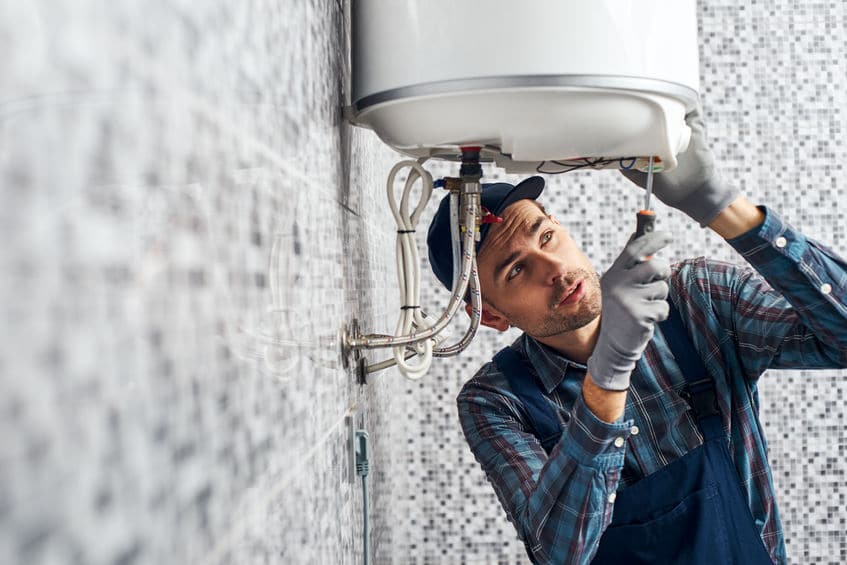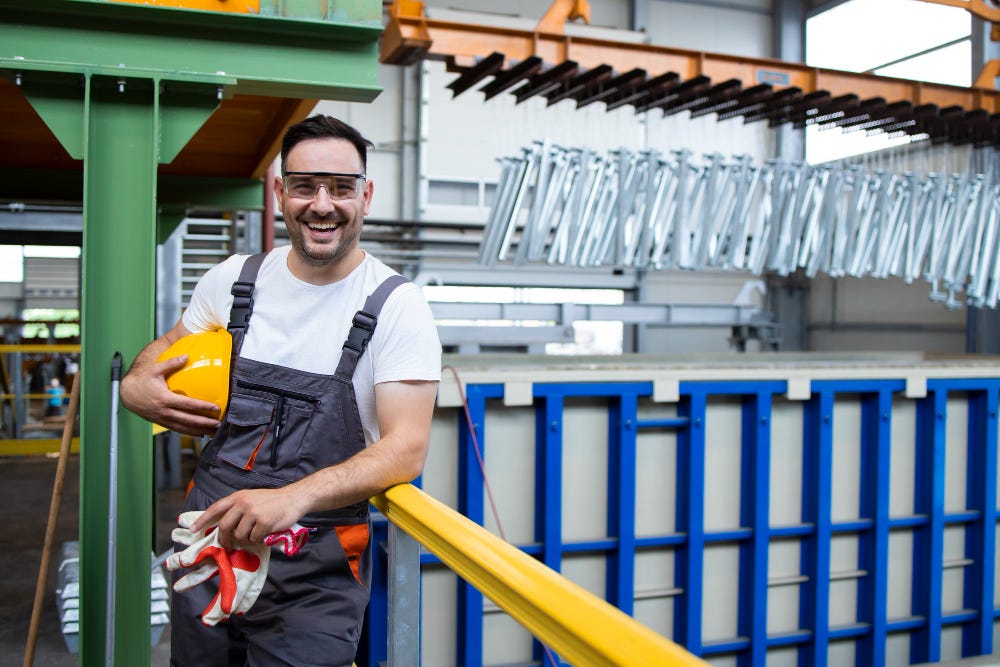In this article in the next paragraphs yow will discover additional reliable material on the subject of 7 Plumbing Industry Trends You Need To Know.

Introduction
The plumbing market is undertaking a transformative stage driven by technical developments and growing issues for sustainability and effectiveness. This post discovers emerging trends and developments forming the future of plumbing.
Smart Pipes Systems
Incorporating clever innovation right into plumbing systems makes it possible for remote tracking, leakage detection, and automated maintenance. Smart sensors and IoT (Net of Points) tools enable homeowners and plumbing technicians to check water usage and identify problems in real-time, bring about a lot more efficient source monitoring and positive maintenance.
Water Efficiency Solutions
With boosting focus on water preservation, cutting-edge services are being established to reduce water waste in plumbing systems. High-efficiency fixtures, greywater recycling systems, and wise irrigation controllers are amongst the technologies helping customers lower their water footprint while preserving convenience and ease.
Lasting Materials
The shift towards sustainability encompasses pipes materials, with an expanding choice for green choices. Eco-friendly piping materials, such as PEX (cross-linked polyethylene) and HDPE (high-density polyethylene), deal resilience and resistance to deterioration without jeopardizing environmental stability.
Anticipating Maintenance
Predictive maintenance techniques take advantage of data analytics and machine learning algorithms to prepare for and prevent plumbing concerns before they happen. By examining historical information and performance metrics, anticipating maintenance algorithms can determine patterns and abnormalities, making it possible for aggressive interventions to prevent pricey repairs and disturbances.
Enhanced Reality in Pipes
Augmented Truth (AR) technology is revolutionizing plumbing by offering specialists with real-time visual guidance for troubleshooting and fixing jobs. AR-enabled smart glasses or mobile applications overlay digital information onto the physical environment, helping plumbing professionals visualize pipeline formats, determine surprise leakages, and perform repairs with accuracy.
Influence of 3D Printing
The advent of 3D printing has actually presented brand-new opportunities in making plumbing elements. From custom-designed fixtures to complex pipe fittings, 3D printing permits quick prototyping and on-demand production, decreasing preparations and enabling better personalization in pipes layout.
Health and Safety Qualities
In reaction to enhanced concerns for health and safety, plumbing fixtures are integrating attributes such as antimicrobial surface areas, touchless procedure, and self-cleaning devices. These developments not just improve health but also advertise user convenience and comfort.
Hygiene-focused Fixtures
Touchless faucets, self-sanitizing bathrooms, and antimicrobial surface areas are coming to be progressively common in domestic and industrial setups, reducing the risk of germ transmission and advertising a cleaner, healthier setting.
Water Quality Surveillance
Improvements in water top quality tracking modern technologies enable property owners to monitor the purity and safety of their water in real-time. Smart water quality sensing units can identify contaminants, pH levels, and temperature level variations, equipping users to take aggressive steps to make sure water security.
Remote Pipes Solutions
Remote diagnostics and online support are changing the method plumbing services are provided. Via video clip conferencing and remote access innovations, plumbers can fix concerns, supply support for DIY fixings, and also do remote evaluations, providing better ease of access and ease to home owners.
Challenges and Opportunities
While plumbing technologies hold enormous promise, they additionally present difficulties such as information personal privacy concerns, governing conformity, and the need for labor force training. Dealing with these difficulties calls for cooperation between industry stakeholders and governing bodies to make certain safe and liable implementation of brand-new innovations.
Regulatory Landscape
Regulative frameworks play a critical role in shaping the adoption of plumbing developments, with standards and codes controling everything from water effectiveness to item safety and security. As technologies continue to develop, regulative bodies should adjust to make certain consumer security and environmental stewardship.
Future Expectation
The future of pipes is identified by proceeded advancement and assimilation with other sectors such as IoT, renewable resource, and building automation. By accepting lasting techniques, leveraging emerging innovations, and focusing on user-centric style, the pipes market is positioned to resolve the advancing needs of society while decreasing its ecological impact.
Verdict
Finally, the future of pipes is specified by a merging of innovation, sustainability, and user-centric layout. By accepting smart solutions, lasting products, and positive maintenance methods, the plumbing industry can enhance efficiency, advertise safety and security, and add to a more lasting future.
Plumbing Industry Trends You Need To Know
Smart technology in plumbing
Homeowners want to be able to manage their homes from their phones. The technology exists to make that happen. From smart toilets to leak detector devices, the whole plumbing system can be managed on an interconnected network made up of sensors, IoT devices, and machine learning algorithms.
This allows for wireless control to turn appliances on and off, automate routines, and access advanced monitoring to track water usage and flag potential issues. Smart technology streamlines water consumption, maintenance and energy usage, creating a more efficient system.
Green plumbing
The data analysis possible with smart technology not only improves convenience and cost-effectiveness but also fulfills a high-priority customer desire – sustainability. Consumers are very aware of their impact on the planet and want plumbing solutions to reduce damage and support sustainability. Eco-friendly plumbing solutions are already starting to emerge.
Customers can opt for low-flow toilets, water-saving faucets, and connections to sustainable energy sources. Beyond monitoring water consumption, customers can conserve water through the installation of greywater systems. This is a system that collects water that has been used but is still clean enough for some household uses such as toilet flushing.
Shorter product pipeline
To keep up with modern plumbing, plumbers need modern tools that enable them to complete jobs more efficiently. One technology making strides in this area is 3D printing. By 3D printing key plumbing fixtures, plumbers can reduce wait times even for specialized fixtures. It minimizes delays often seen in traditional manufacturing that frustrate customers and prevent plumbers from taking on more work.
Off-site repairs
Augmented reality is making a splash in many industries including plumbing. Plumbers can map a building online so they can explore the plumbing system through augmented reality, identifying areas of maintenance and repair completely digitally. This technology can be applied quite widely in plumbers’ work including planning installations and training new recruits. It’s safer, smarter and more efficient.
Low-footprint materials
Another way for plumbing companies to reduce their environmental footprint and meet the customer demand for sustainability is by using recycled materials in their work. The products they source and manufacture such as pipes, fixtures and faucets can be made from recycled materials. This saves the planet while being just as effective.
Onsite water purification
Additionally, plumbing companies can be advocates of water conservation and ease the financial and environmental concerns of customers by offering water purification systems. New water purification technology such as reverse osmosis systems and UV systems make it possible for homeowners and business owners to thoroughly cleanse water, removing contaminants onsite. This means the water can be safely reused in more ways than greywater can be, establishing a water recycling loop.
Tankless water heaters
Another innovation of modern plumbing is tankless water heaters. The idea is that the water is heated on demand as it runs through the system instead of being heated in a water tank. This is more energy efficient and therefore cost-effective and eco-friendly because water isn’t heated needlessly.

As a passionate reader about The Future of Plumbing: Trends and Innovations to Watch, I was thinking sharing that information was valuable. If you enjoyed our blog posting please be sure to share it. Thank you for being here. Return soon.
Call Today